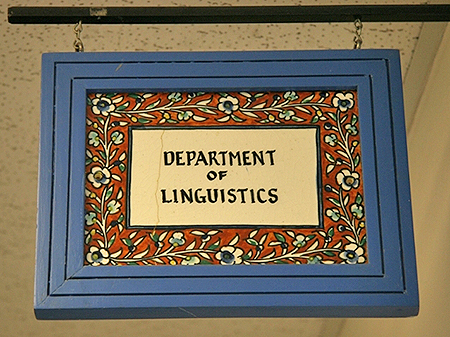
Linguistics ETDs
Publication Date
Spring 4-12-2017
Abstract
This research offers insight into the way linguistic constructions develop new meanings by examining a group of semantically and structurally related form-meaning pairings in Spanish, all of which contain a verb and the word cuenta ‘count/account’. Five constructions which now all have cognitive meanings, dar(se) cuenta ‘realize’, caer en la cuenta ‘realize’, hacer (de) cuenta ‘pretend’, tener en cuenta ‘consider’, and tomar (en) cuenta ‘consider’, are examined from the 1200s to the 1900s. The data come from the Historical Corpus del Español (Davies 2002). 5,301 examples of these constructions were coded for factors based on two pilot studies (Healey 2012, 2016) and analyzed using a Random Forests machine-learning algorithm and variable rule analysis. The results indicate that darse cuenta, hacer (de) cuenta, tener en cuenta, and tomar (en) cuenta have followed Traugott’s (1989) first tendency of semantic change whereby meanings based in the external world increasingly become based in the speaker’s internal/mental world. In this case, these four constructions began with more external meanings: dar cuenta ‘give payment’, hacer (de) cuenta ‘settle the account/do a count’, tener en cuenta ‘have in account’, and tomar (en) cuenta ‘take payment’/‘take a count’. These four individual constructions have undergone semantic change via metaphorization. On the other hand, the fifth construction being studied, caer en la cuenta, is a case of analogization from darse cuenta. Another conclusion of this research is that a Verb + cuenta exemplar cluster exists in the speaker’s mind based on the semantic and syntactic relatedness of these constructions.
Project Sponsors
Russel J. and Dorothy S. Bilinski Foundation
Language
English
Keywords
diachronic construction grammar, corpus linguistics, random forests, semantic change, exemplar theory, metaphorization
Document Type
Dissertation
Degree Name
Linguistics
Level of Degree
Doctoral
Department Name
Department of Linguistics
First Committee Member (Chair)
Damian Wilson
Second Committee Member
Christian Koops
Third Committee Member
Melissa Axelrod
Fourth Committee Member
Richard File-Muriel
Recommended Citation
Healey, Aubrey N.. "Evolution of Complex Predicates with Cuenta Expressing Semantic Events of Cognition in Spanish." (2017). https://digitalrepository.unm.edu/ling_etds/48


